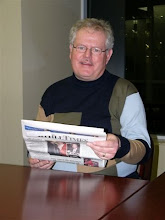By now most of us have an opinion whether John Furlong should have done more to prevent a fatal accident on the luge track at last year’s Vancouver Olympics. There isn’t much point in passing judgment here on the man who was head of the Vancouver Organizing Committee.
But there is a sidebar issue on VANOC’s media relations tactics.
The CBC’s Fifth Estate obtained a sensitive e-mail from the B.C. Coroner’s Office through the province’s Freedom of Information law. In the e-mail, Furlong alerted colleagues that VANOC had received a letter in which the track’s designer expressed concern about speeds being recorded on it.
This concern was made and passed on to VANOC officials almost a year before a young Georgian luger, Nodar Kumaritashvili, died instantly after hitting a metal pole at 145 km/h on the track.
Furlong passed on the designer’s concerns in an e-mail to senior VANOC officials, including legal counsel, and said the letter was ``a warning that the track is, in their view, too fast and someone could get badly hurt.’’
He added: ``I think the case could be made we were warned and did nothing.’’
No one disclosed this e-mail after the tragedy. In fact, Furlong said after the crash there were no safety concerns raised about the track.
So how did Furlong’s media adviser handle this?
Renee Smith-Valade, VANOC’s former vice-president of communications, managed to get a hold copies of the documents in the Fifth Estate’s possession, including the Furlong e-mail. She then released the material before the Fifth Estate could go to air to other media, namely CTV, the host broadcaster of the Olympics, and the Globe and Mail, a corporate cousin. Neither disclosed how they obtained the material.
It was a pre-emptive move designed to rob the Fifth Estate of its scoop and therefore deaden the impact. Or as Smith-Valade put it, it was a manoeuvre to present ``a more balanced view and protect VANOC’s reputation.’’
Smith-Valade was likely hoping the turmoil in the
Reports by the Fifth Estate have brought down cabinet ministers. Smith-Valade was trying to dilute the Fifth Estate’s impact by making the issue old news by the time its program aired, which wasn’t until Feb. 11.
But it is hard to say whether the move worked. VANOC media tactics became a story themselves. As a result, other media such as the Vancouver Sun and the Toronto Star weighed in with harsh commentary about Furlong and Smith-Valade’s tactic.
In fact, the tactic might have the opposite effect that what was intended.
The best media relations tactic probably would have been to disclose the safety concerns a year ago and take the lumps then. Or better still, ensure that the track was fully safe in the first place.




No comments:
Post a Comment